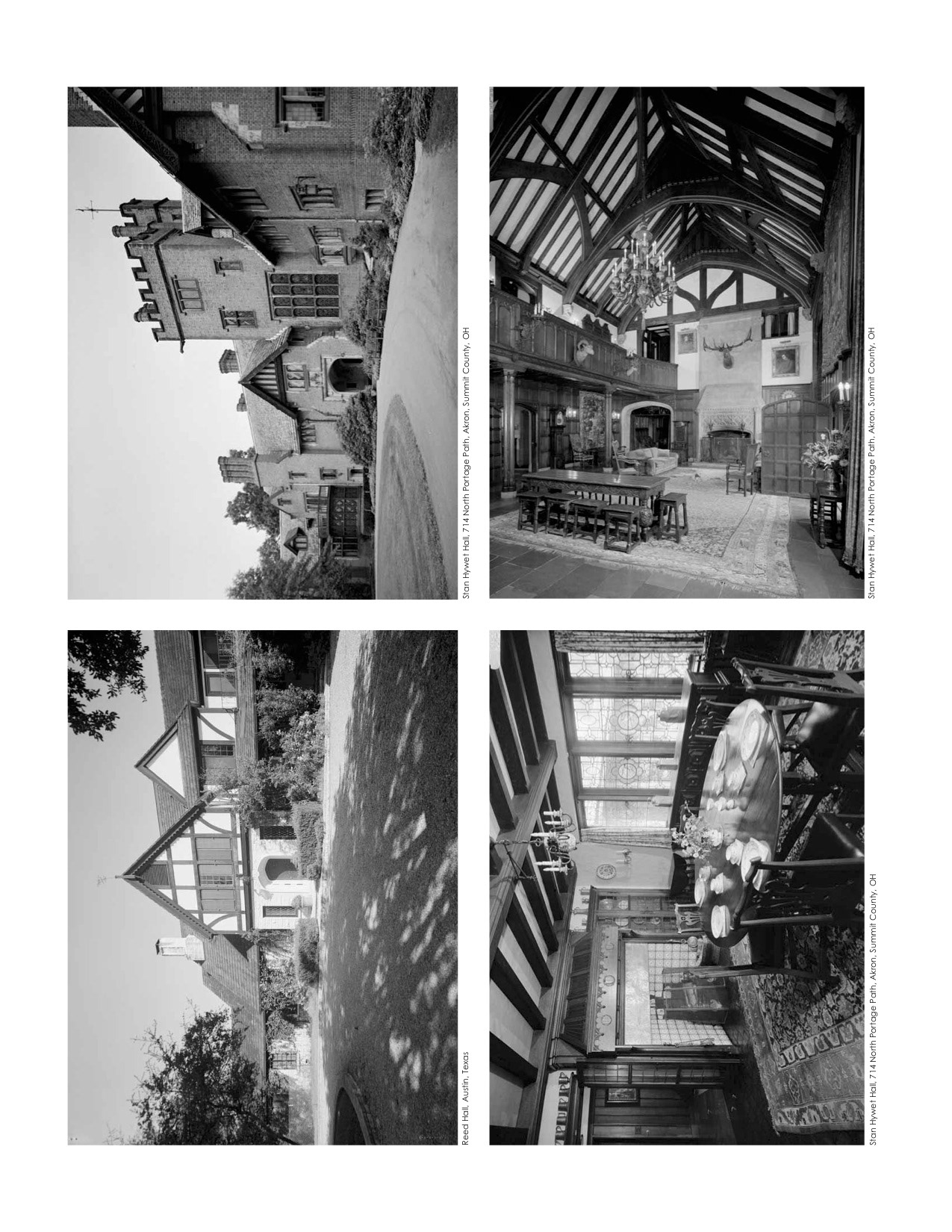























Tudor homes are characterized by their steeply pitched gable roofs, playfully elaborate masonry chimneys (often with chimney pots), embellished doorways, groupings of windows, and decorative half-timbering, this last an exposed wood framework with the spaces between the timbers filled with masonry or stucco.
Oriel windows are like floating bay windows that extend past the face of the exterior home. Plenty of windows to allow natural light in. Rectangular windows with small lites and mullions were the most common. Lead glass windows also used diamond shape or grid patterns on them to keep up with the geometric symbolic shapes throughout Tudor period design.
Architectural materials were a big part of Tudor interiors and exteriors. Natural materials such as rock, plaster, oak wood, stone were amongst those for the exterior and metals like copper, wrought iron and walls were often covered with wood 2/3 of the way up the wall with plaster above. Try adding these gorgeous finishes into your home to feel the warmth of the Tudor-style period in your home.
TUDOR STYLE MOULDINGS
Tudor style mouldings are characterized by bold coves and ovolos, large chamfers and fillets, beak moulds, and delicate ogees and beads.
Tudor style mouldings are characterized by bold coves and ovolos, large chamfers and fillets, beak moulds, and delicate ogees and beads.



https://freshome.com/2013/11/12/10-ways-bring-tudor-architectural-details-home/
Domestic[edit]
Historic Tudor houses along Mill Street in Warwick
Entrance facade of Sutton Place, Surrey, dating from around 1525
Anne Hathaway's Cottage, Stratford Upon Avon, Warwickshire: typical 16th-century farmhouse; contains many original features of the house as it would have been in the 1580s.
Bishop Percy House, Bridgnorth, Shropshire
Castle Lodge, Ludlow, Shropshire
Charlecote Park, Warwickshire
Compton Wynyates, Warwickshire
Conquest House, Canterbury, Kent
Hampton Court Palace, London
Hengrave Hall, Suffolk, 1525–1538
Henley Street, Stratford Upon Avon, Warwickshire-historic district of the entire town, includes the birthplace of William Shakespeare, a large Tudor edifice constructed c. 1570's.
Kenilworth Castle, Kenilworth, Warwickshire – retains many elements from Robert Dudley's 1570s design
Layer Marney Tower, Essex
Mill Street, Warwick, Warwickshire
Montacute House, Somerset – late Tudor
Nonsuch Palace – perhaps the grandest of Henry VIII's building projects
Oxburgh Hall, Norfolk
Prysten House, Plymouth, Devon c. 1490
Gatehouse of Richmond Palace, London – early Tudor
Southover Grange, Lewes, East Sussex - c. 1572
Sutton Place, Surrey – c. 1525
Tudor Barn Eltham, London[18]
Wollaton Hall, Nottinghamshire – late Tudor